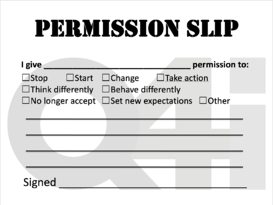Getting the Competitive Advantage: Optimizing HR
Your HR team worries about a lot of things.
They worry about compensation, compliance, retention, engagement, attraction, productivity, company culture, and more. Over the past few years, HR has gotten more and more attention as leaders recognize its ability to drive results and growth.
If your C-Suite hasn’t yet, it’s well past time to start strengthening the ties between HR and your leadership teams. With the right direction, HR can provide insights into different levels of your organization that direct managers, individuals, and high-level leaders can easily miss.
Uncovering the competition
A large part of attracting and retaining top industry talent is standing out among your competitors. This requires an intimate knowledge of the different factors employees care about right now, not what ten years ago.
HR has a unique window into this subject. They have access to internal team reviews, the benefits you offer, and professional development plans. They’re there for interviews and can track what questions candidates ask about the culture, what you offer, and how your business is run.
All this is a roundabout way of saying HR has the hard data you need.
If you’re wondering why a clutch of employees all left at the same time or why you don’t see a strong ROI on your benefits plan, your HR team has the answers in substantial, verifiable numbers. Their insight can be invaluable when deciding what perks to offer or how to develop company loyalty and engagement.
Setting you up for success
While HR may have a lot of insight into your organization’s critical parts, it’s essential to remember they are busy. Without a concerted effort on behalf of the leadership, their wisdom can go unspoken, unused, and wasted. To make sure you don’t waste your opportunity for development, take these steps.
Start the conversation
At the beginning of every year, sit down with your HR team and start a high-level conversation about your organization’s current state. Ensure you hit the major talking points: benefits, employee engagement, retention, compliance, and culture. Get a gauge on where they think you are on the competitive landscape. Think about and ask such questions as:
- What are your competitors offering?
- Who have your employees left your organization to work for?
- What do employees care about currently?
- What are the trending challenges employees are struggling with?
Use this conversation as an opportunity to brainstorm ideas, solutions, and possible challenges. Identify three high-level, long-term goals you have. Break those goals down into actionable, measurable, short-term goals to focus on throughout the year.
Revisit, review, repeat
Set quarterly meetings to review progress on each of these goals. Make sure to set the tone for open, honest communication. Your HR team needs to know it’s okay to talk about these issues because without that confidence, these meetings will be useless. It can help to focus on hard data to de-personalize successes and failures.
Make these reviews about progress and engage and encourage your team’s creativity to solve problems and develop new ideas to help you keep your competitive advantage. Set measurable, SMART goals to create a clear path forward.
Unlock your potential
Since the HR department touches different parts of your organization, its ability to affect change and assess your company’s health can be meaningful. Don’t miss out on this opportunity to gain real insight, gauge where you are in your competitive landscape, and set yourself up for success. Strong leaders understand the need for transparent internal processes for growth, and HR has the insights to get you on the right path.
Together, your potential is more significant than you may think.
Photo by Roman Samborskyi
Content provided by Q4iNetwork and partners
![]()


